 |
||
|
||
| ||
Jenoptik announces new JD C 2.1 LCD and JD 2.1 ff digital still cameras NVIDIA announces Cg Compiler Version 1.0 SiS announced the Hyper-Threading support in its chipsets Chaintech graphics card roadmap VIA C3M266-L: µATX board on CLE266 chipset Jenoptik announces new JD C 2.1 LCD and JD 2.1 ff digital still cameras German Jenoptik announced two new digital cameras: JD (Jenadigital) C 2.1 LCD and JD 2.1 ff. Both feature 2-mp CCDs and fixed-focus lens, support resultions up to 1600õ1200 and 2048õ1536 (C 2.1 LCD), 320õ240 movies and SD (Secure Digital) flash cards.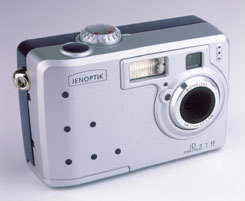 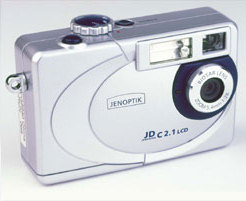 JD 2.1 ff specifications:
Source: DC Views
NVIDIA announces Cg Compiler Version 1.0 NVIDIA officially announced the final NVIDIA Cg Compiler version 1.0."Cg provides developers with a complete programming environment that is easy to use and allows for the fast creation of special effects and real-time cinematic quality experiences on multiple platforms. By providing a new level of abstraction, Cg removes the need for developers to program directly to the graphics hardware assembly language, and thereby more easily target OpenGL®, DirectX®, Windows®, Linux, Mac OS X®, and console platforms, such as the Xbox™. Cg was developed in close collaboration with Microsoft® Corporation and is compatible with both the OpenGL API and Microsoft’s HLSL for DirectX 9.0." NVIDIA Cg Compiler version 1.0 can generate DirectX and OpenGL code, supports OpenGL 1.4+ and DirectX 8.0+.
 NVIDIA Cg Compiler, along with other Cg environmental components, including the open sources, is freely available at developer.nvidia.com (download) and www.cgshaders.org.
SiS announced the Hyper-Threading support in its chipsets Despite SiS and Intel continue to negotiate about the licensing of 800MHz FSB, the former has already informed about the licensing of Intel Hyper-Threading technology and announced its support in 5 current chipsets by posting some info on the website, not dissipating on any press releases.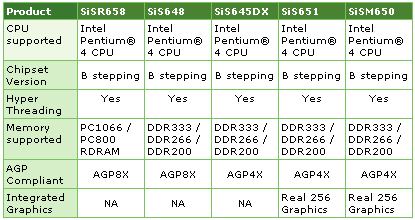 As you can see, the HT-enabled list includes SiSR658 RDRAM, mobile SiSM650 along with desktop SiS648, SiS645DX and SiS651. According to the table, Hyper-Threading is featured in new stepping B solutions. The company informed that the new chipset production will be launched in December, and in the nearest future we should also see the Hyper-Threading-enabled SiS655. Source: The DigiTimes
Chaintech graphics card roadmap We got to know the provisional graphics card roadmap of Chaintech for the closest months.NVIDIA remains the largest graphics card partner of Chaintech, so the solutions on its GPUs are and will be present in all market segments. For "enthusiasts" Chaintech prepares GeForceFX 5800-based product with 500/500 (1000) MHz (DDRII) clock, scheduled to Q1 2003. For the same market the company will release the GX81 Special Edition (GeForce4 Ti4800SE, i.e., Ti4400 with AGP 8x, 275/275 MHz, 128 MB DDR, VIVO, DVI) and GX80 (GeForce4 Ti4800-8X, AGP 8õ, 300/325MHz, 128Mb DDR, optional VIVO and DVI). For the high-performance solution market the company will announce: GX21-S Special Edition (128Mb DDR, VIVO, DVI) and GX20 (64/128Mb DDR, optional VIVO and DVI) AGP 8õ solutions on GeForce4 Ti4200-8X (250/256, 250 MHz) as well as AGP 8õ variations of G481 (64Mb DDR, VIVO, DVI), G480 (64Mb DDR, VIVO, DVI ) and LA-G482 (64Mb 64-bit DDR, TV-out) on GeForce 4 MX440-8X (275/256MHz). The mainstream will see the GeForce 4 MX440/ SE-based cards (270/200MHz), as Chaintech believes GeForce 2 MX400 and TNT2 M64 solutions are still in demand in this market. Besides, Chaintech will release the SiS Xabre-based solutions: Xabre600 will be featured in the recently announced S460 AGP 8õ (64/128Mb 128-bit DDR, 300/300MHz, optional DVI and TV-out). Xabre400 and Xabre200 cards will be produced as well. It’s also interesting that the roadmap now includes the Trident XP4-based card (Trident XP4 T2-based, I guess, with 230/230MHz clock). TX40 will feature 64Mb 128-bit DDR, optional DVI-I and TV-out.
VIA C3M266-L: µATX board on CLE266 chipset We’ve described many variants of VIA Technologies CLE266-based motherboards, like, say, Epia-M9000. However, it’s usually about Mini-ITX design. But last weekend Japanese retail was updated with Socket 370 CLE266-based µATX mobos — C3M266-L.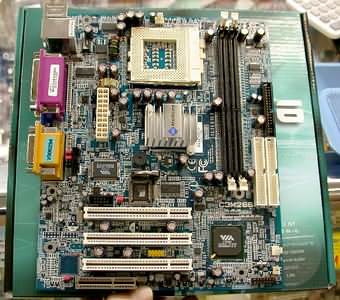 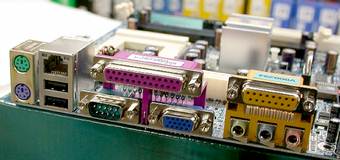 It bases on Apollo CLE266 (CastleRock graphics, integrated MPEG2 encoder) + VT8235 bundle, supports any Socket 370 CPUs: C3, Pentium III, Celeron with 100/133MHz FSB. The board features 2 DIMM sockets (PC2100 DDR), 3 PCI slots (one shared with a CNR slot), 6-ch. VT1616 AC´97 codec, 10/100Base LAN (VT6103), IEEE1394 (VT6307S) and USB 2.0 ports, UltraATA/133 support.
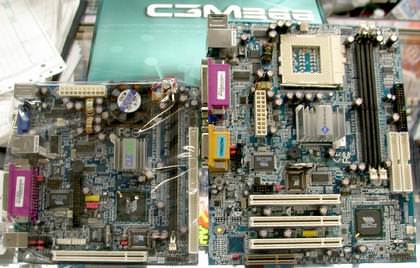 It seems to be an interesting "quiet" solution, especially for those, satisfied with µATX design. Here are the "family photos" of Epia-M9000 (Mini-ITX, 170x170 mm) and C3M266-L (MicroATX, 245x205 mm) from a Japanese shop to compare the size. The novelty costs about 10500-10800 yens (about $90) in Japan. Source: ASCII24
Write a comment below. No registration needed!
|
Platform · Video · Multimedia · Mobile · Other || About us & Privacy policy · Twitter · Facebook Copyright © Byrds Research & Publishing, Ltd., 1997–2011. All rights reserved. |